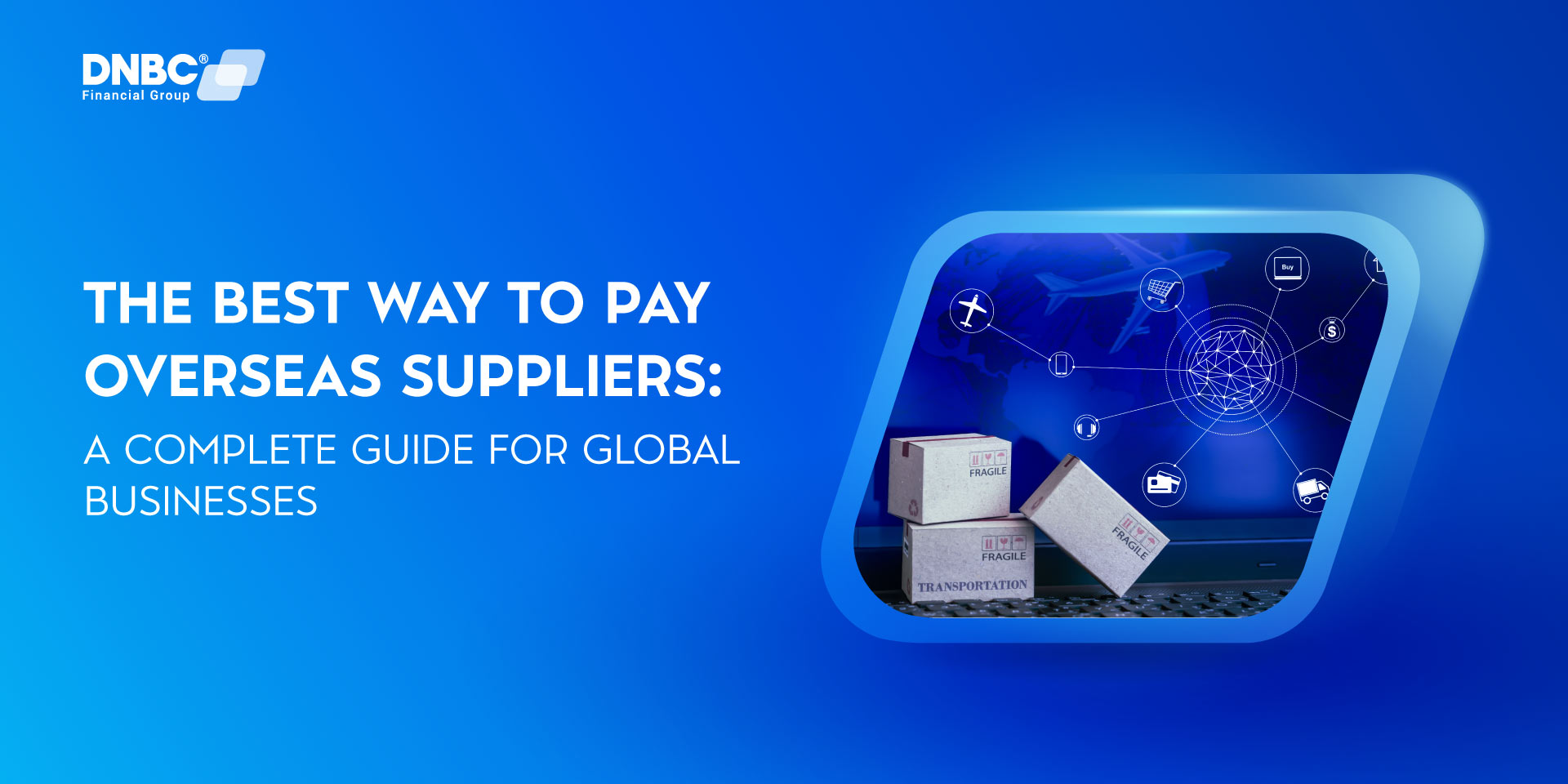- Home
- Blog
- Business Finance
- How to Pay International Employees Without Hassle
How to Pay International Employees Without Hassle
Business Finance
22 February 2024
DNBC Team
This article is a part of DNBCGroup Blog Center
Contact DNBCGroup for the technology news, tips, trends, and updates.
In today’s globalized business landscape, mastering the ability to effectively pay international employees is crucial for companies aiming to broaden their operations across borders.
Navigating the complexities of international payroll requires a deep understanding of various factors such as different currencies, time zones, labor laws, and tax obligations. These elements play a pivotal role in determining the optimal international payment system and devising a comprehensive strategy for managing international payroll.
This blog post delves into these aspects, providing valuable insights into the complexity of international payroll management. Furthermore, it delves into a comparative analysis of common international employee payment methods.
Understanding the complexity of paying international employees
As businesses expand into new markets and onboard employees from across the globe, they encounter the intricate challenge of managing international payroll. This task is complicated by several key factors, including:
Currency fluctuations
Currency values fluctuate globally, and shifts in exchange rates can significantly affect the actual earnings that international employees receive.

It's crucial for businesses to select an international payment method that not only offers competitive exchange rates but also minimizes transaction fees. This ensures employees are compensated fairly, receiving the full value of their earnings without undue loss.
Different time zones
Unlike domestic payroll, where all employees operate within the same or similar time frames, international payroll must accommodate a wide range of working hours and payment expectations.
The variance in time zones complicates the establishment of a uniform payroll schedule. For instance, a payroll process initiated during business hours in one country might fall outside of working hours in another, delaying immediate responses or necessary actions. Therefore, the time zone challenge requires businesses to invest in careful planning.

Labor law requirements
When paying international employees, it's crucial to remember that each country comes with its own labor laws. From minimum wage standards to how often employees need to be paid, these rules vary widely across borders.
Getting a firm grasp on these legal requirements isn't just important, it's essential. It's the key to staying compliant and steering clear of any legal troubles down the line. So, for any business stepping into the global market, dedicating time to understand and follow each country's labor laws is a must.
Tax obligations
Tackling tax obligations is a major hurdle in the world of international payroll. Navigating through the tax laws of both the business's home country and the countries where employees reside can be complex. Each location might have its own set of rules around withholding taxes, social security contributions, and specific reporting requirements.
Ensuring that your business is fully compliant with these varying tax requirements is not just beneficial, it's necessary. Proactively managing these tax obligations helps avoid substantial penalties and foster a trustworthy relationship with tax authorities across the globe. It also safeguards your business's reputation and contributes to smoother international operations.

Comparing international employee payment methods
Paying international employees involves navigating a variety of options, each with its unique benefits and challenges. Understanding these differences is key to choosing the most suitable payment strategy for your business needs.
Here's a closer look at three common international employee payment methods:
Setting up a local entity
For businesses planning a significant expansion in a particular country and hiring a large number of employees, setting up an official business entity in that country is a strategic move.
This approach involves creating a legal business presence within the country, allowing for the setup of a local payroll system, and facilitating payments through this entity. It's a strategy that not only strengthens your market presence but also ensures payroll management is consistent and compliant with local regulations.
However, this method requires considerable investment in terms of research, planning, and financial resources. The process of establishing a local entity can be lengthy, sometimes taking several months to complete.

Partnering with an Employer of Record (EOR)
For companies aiming to expand their global footprint without the burden of establishing local entities, partnering with an EOR is an efficient solution.
An EOR steps in as the official employer for your overseas staff. This partnership means that while your company retains complete control over the day-to-day tasks and overall management of the employees, the EOR takes on the legal and administrative responsibilities. This includes managing payroll, ensuring that employees receive their benefits, and navigating the complex web of local compliance requirements.
By delegating these tasks to an EOR, your company can concentrate on strategic goals and core operations, significantly reducing administrative overhead. Moreover, this approach simplifies hiring in multiple countries, avoiding the complexity of establishing separate entities for each new market.

Even though working with an EOR might lead to increased expenses, reduced direct oversight of employees, and reliance on the EOR's dependability, it continues to be an attractive option for companies looking for a quick and efficient way to grow internationally.
Hiring contractors
Hiring independent contractors offers more flexibility and usually comes at a lower cost for your company. This method shifts the responsibility for local taxes and benefits to the contractors themselves, thereby reducing the administrative burden on your company.

However, it's crucial to distinguish clearly between contractors and employees to comply with regulatory requirements in both your home country and the contractor's country. Proper classification is essential for adhering to obligations regarding taxes, benefits, health insurance, and overtime obligations. It helps avoid the legal and financial repercussions associated with misclassification.
When it comes to making payments to international contractors, the importance of partnering with a reputable and secure global payment partner cannot be overstated. A trusted partner ensures swift, secure transactions while maintaining strict compliance with the regulatory requirements of all involved jurisdictions.
How DNBC assists businesses in paying international contractors
DNBC stands as a trusted international money transfer service partner. We offer specialized solutions tailored to navigate the complexities of international contractor payments seamlessly.
At DNBC, we understand that each business has unique needs and challenges. That's why DNBC offers free consultations to tailor our solutions to your specific business goals.
Whether you're looking to streamline payment processes, ensure compliance, or simply explore efficient ways to manage international contractor payments, DNBC is here to assist.
Contact us now for your free consultation!
Related Articles:- Cross-Border Business Opportunities and Challenges in the Global Marketplace
- What Is an International Business Account and Why Do Businesses Need One?
- International Money Transfers: Barriers and Tips
- Exploring the Importance and Impact of International Trade Agreements
- How DNBC Facilitates International Money Transfer
- The Impact of Fintech on International Money Transfers
Your Trusted Partner
In your Digital
Journey
Free 1 - on -1 support
Free account opening fees
No hidden fees
Note: The content in this article is for general informative purposes only. You should conduct your own research or ask for specialist advice before making any financial decisions. All information in this article is current as of the date of publication, and DNBC Financial Group reserves the right to modify, add, or remove any information. We don’t provide any express or implied representations, warranties, or guarantees regarding the accuracy, completeness, or currency of the content within this publication.
Related posts

A Guide to Low-Cost Business Transfers Outside the SEPA Area
04 July 2025

How to Set Up a Business Escrow Account: A Simple Guide
20 June 2025

Cross-Border Business: Opportunities and Challenges in the Global Marketplace
23 May 2025

The Best Way to Pay Overseas Suppliers: A Complete Guide for Global Businesses
22 May 2025

Real Time Cross Border Payments: Shaping the Future of Global Financial Transactions
22 May 2025